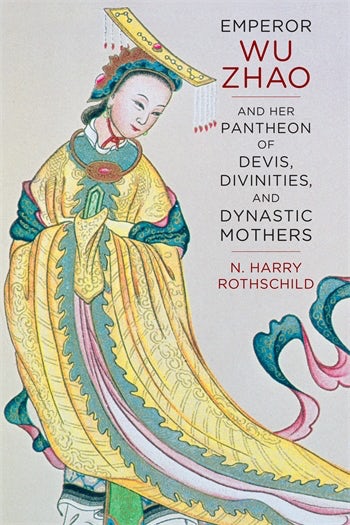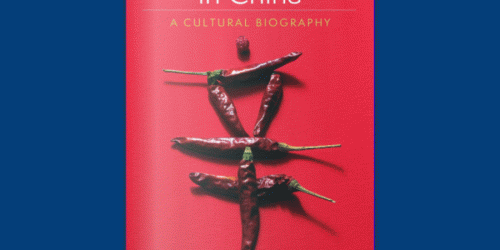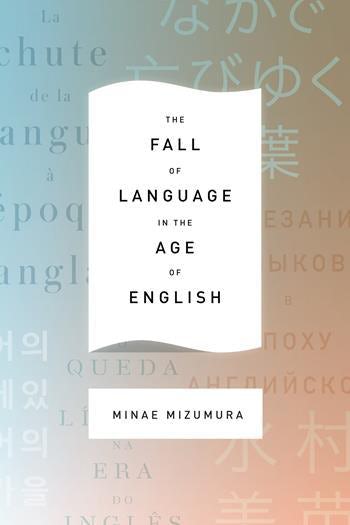Trickster Tales and “True Crime”: An Interview with Christopher Rea and Bruce Rusk, translators of The Book of Swindles

This week, we introduced The Book of Swindles, a chronicle of scams and deception from Ming China. These stories of fortunes made and lost, of cunning crooks and unsolved crimes make us ask: was swindling so widespread in 1600s China? What caused the profound social changes and moral anxiety at the time?
To learn more about the stories’ background, we talked to Christopher Rea and Bruce Rusk, professors at the University of British Columbia and translators of The Book of Swindles. They told us about rising consumer culture in the early modern period, parallels with American literature, and Zhang Yingyu’s “delight in criminal cleverness.”
Question: You write in the introduction to The Book of Swindles that Zhang Yingyu’s time, the early 1600s, was one of rapid social and economic change. Why was the Ming empire suddenly so commercialized and its roads and rivers busy with itinerant merchants? Many of Zhang’s stories are set in coastal provinces like Fujian. If we were to travel with him across late-Ming Fujian, what would we see that was new and different?
BR: First, we’d see a lot of merchants—and even more porters and boatmen—carrying goods over long distances, some for domestic markets and some coming from, or bound for, overseas. We’d encounter other travelers of many kinds, such as opera troupes, itinerant doctors, and even some we could classify as tourists, male and female, going to see famous sights, to perform pilgrimages to holy mountains, or to do a little of both. More than ever before, we’d pass through villages devoted to the production of a single commodity such as fruit or ceramics, whose producers would use the revenue to buy their staples, such as grain produced in other areas. And in the towns and villages we would see many signs of rising prosperity, people of middling status who owned works of art, books, and fancy clothes; some had hobbies such as goldfish-raising or bonsai. Many contemporary writers remarked on these changes, often seeing them as illustrating a decline from the ideal social order. To them, one of the ills of the age was a new fluidity of social status resulting not only from new wealth but also the increasing need to interact with strangers of uncertain background either in populous cities or “on the road,” in inns, taverns, and on boats. These anonymous and transitory spaces were perfect settings for the shape-shifting swindler.
Modern economic historians disagree about exactly what factors caused these broader economic developments. Some point to favorable climate trends. Others emphasize the role of huge amounts of silver—the main form of money in the period—coming in from new mines in Japan and the New World. Foreign traders used silver to purchase Chinese goods such as tea, silk, and porcelain and this trade increased the money supply in the late Ming economy. Internal factors include a long period of relative stability that allowed local, regional, and long-distance trade networks to develop, which fostered more efficient, specialized production in agriculture and industry. Swindlers and other criminals were all too ready to siphon off these new flows of goods and money.
Q: Zhang ends each tale with a moral lesson, yet the stories are clearly also meant to entertain. As you point out, a story like “A Eunuch Cooks Boys to Make a Tonic of Male Essence” is long on scandal and social criticism and short on helpful advice. Who was The Book of Swindles written for, and what would you say is its closest contemporary equivalent in terms of genre?
CR: Well, the “Male Essence” story does teach people with sons not to sell them to eunuchs—who in the late Ming numbered in the tens of thousands and who did purchase boy servants—but my hunch is that at-risk readers of that particular swindle were few. Zhang often panders to popular prejudices about eunuchs, monks, women, and government underlings. You could say his commentary is a mix of moral posturing and earnestness. Still, his stories do educate as they entertain. “Male Essence” is a good example: its sensationalism notwithstanding, it actually begins with a polemic about taxation.
As for audience, most of the stories involve merchants, and Zhang discusses their interests extensively, so it seems likely that they were his primary intended readership. He expresses sympathy with men who get lonely on the road, and notes that this makes them vulnerable to false friends. He gives detailed advice about the handling of silver. He suggests ways to vet potential business partners. But he also offers a much wider variety of scenarios of how people perpetrate and foil fraud at home, on the road, in the marketplace, in court and in courtship. As we mention in our introduction, one of the fun things about this book is that it can be read for fun and profit.
BR: One additional hint to the audience is the language of the stories: it’s simple, but it follows the syntax of Literary Chinese (aka Classical Chinese), not the more colloquial language of some novels and stories of the same period. But it is also short on the sort of allusions and historical references a more scholarly work would contain. So it was probably aimed at readers with the kind of literacy that many merchants at the time would have had, enough to write letters, keep accounts, draw up contracts, and make use of books for practical and religious purposes as well as for entertainment.
CR: As for genre, works like The Book of Swindles are easy to find in China nowadays. Some collections actually pair stories about contemporary scams with stories about historical swindles under titles like Panorama of Swindles Old and New, and even include story-end commentaries à la Zhang Yingyu. So, you can find pretty exact genre equivalents in the Chinese-language book market today. “True crime” stories would be an approximate genre category in English, and there are links to folklore such as trickster tales. You also have a similar impulse to compile stories of trickery in anthologies like Michael Farquhar’s A Treasury of Deception: Liars, Misleaders, Hoodwinkers, and the Extraordinary True Stories of History’s Greatest Hoaxes, Fakes, and Frauds (2005).
BR: Entertainment is definitely one of the “hooks” of the Book of Swindles, even when it purports to teach a moral lesson. This is true of much Chinese fiction of the period, however tenuous the link between story and moral might be. It’s also true of a lot of writing about swindles from around the world—for example, American novels like Melville’s The Confidence-Man: His Masquerade, and of course much of Mark Twain. The Book of Swindles shares a delight in criminal cleverness with these works and with other Ming dynasty collections of stories about ingenious officials who catch often equally ingenious lawbreakers. Unlike that kind of “case fiction” (gong’an xiaoshuo), however, the Book of Swindles usually has the criminal outsmart the detective, or makes it a merchant or other unofficial party who gets to the bottom of the case. In this way it’s strikingly different from most of the fiction of its time.
Q: Several stories concern scams perpetrated by women. As you summarize in the introduction, “Women seduce merchants far from home, prostitute female relatives, frame innocent men, steal horses on the highway, and enter into sham marriages for purposes of murder and extortion.” How does Zhang portray gender? Does the book show any changes in, or anxieties about gender roles in Ming China?
CR: The Book of Swindles is about how to recognize tell-tale signs that you’re being had, so its main concern is with showing typical scenarios and behaviors. Characters do have names, but they tend appear less as individuals than as representatives of certain social types. Women, scholars, government clerks, brokers, Daoist priests—Zhang objectifies them all. He does make admiring comments about the brilliant schemes in the first two stories of the “Women” swindles section, especially in the excellent “Three Women Ride Off on Three Horses.” But then we have categorical statements like this one: Even the chastest of women, without exception, will be led into sin if she encounters and is enticed by a licentious woman.
Zhang’s representations of women, prejudicial though they are, don’t represent the main anxiety about changing social roles in his collection. Looming much larger, to me anyway, is his sense that merchants are being too cavalier in handling their money and in trusting people they encounter while traveling. While the courts sometimes do help a dupe obtain restitution, in most stories it’s clear that a man going out on business has to rely mostly on his wits—and the accumulated vicarious knowledge offered by The Book of Swindles—to keep him safe.
Q: Which is your favorite story in the book, and why?
CR: The two in the “Poetry” swindles section were a delight to translate; see especially the pleasure boat poem in “Chen Quan Scams His Way into the Arms of a Famous Courtesan.” Plus, I like the idea of poets as swindlers. I enjoy Zhang’s comment on the “painless scam” in “Forged Letters from the Education Intendant Report Auspicious Dreams,” which was based on a true story. And the four-in-one appearing under the title “A Geomancer Uses His Wife to Steal a Good Seed” made me rethink what it means to be the victim of a swindle.
BR: I am taken with the audacity of the monk in “A Buddhist Monk Identifies a Cow as His Mother,” in which the cleric uses simple, even childish, tricks to spin yarns about past lives and promises of a better rebirth.





